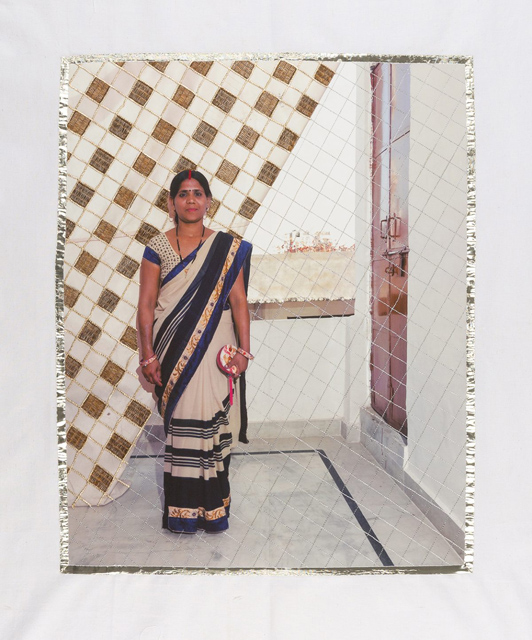319 people reached on Facebook Lassi with Lavina page – Facebook Insights
716 views on LinkedIn – 19 Likes
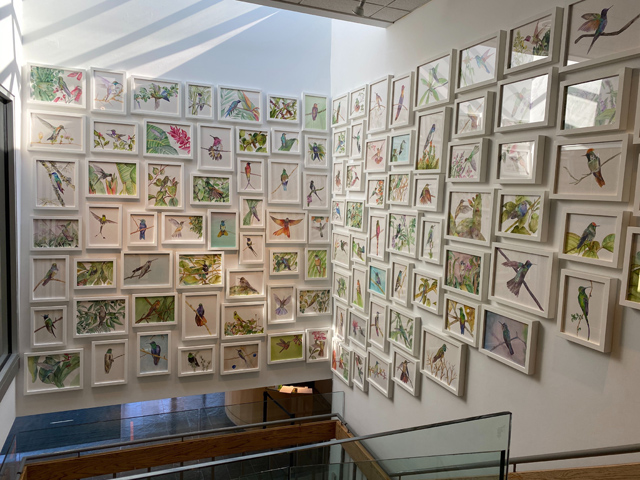
Healing
Finding Community Through the Joy of Art
Compassion
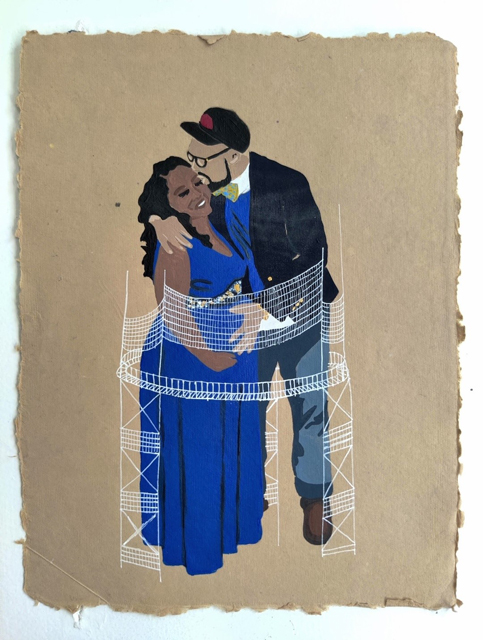
Resilience
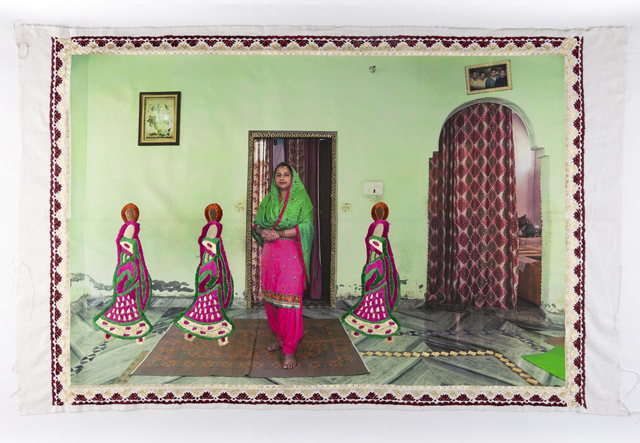
[dropcap]W[/dropcap]hile the ongoing pandemic has uprooted the regular lives of so many, three artists in New Jersey showed how painting an imagined world has actually offered ways to cope and make connections in a socially distanced life.
Rasika Reddy, Elan Cadiz and Spandita Malik are three artists who displayed their work at the Visual Arts Center of New Jersey, which has been the heartbeat of the arts community for 85 years. Their art is bringing strength and joy not only to virtual audiences but also to real-life visitors who are finally beginning to come into the galleries as the state opens up. These artists show through their work that the definition of community can be expanded to embrace the world, be it through nature, crafts or the documenting of people’s lives. Their work can be seen through April 26th at the Center.
Rasika Reddy, who is originally from Hyderabad, has lived on three continents and started painting much later in life, exploring different genres from abstract to representational art. She says, “It actually worked for me because it gave me a unique perspective and an abundance of experience that I was able to draw upon in my artwork. Having immigrated to the United States from India, I have often incorporated the differences and similarities that I have witnessed across these two countries.”
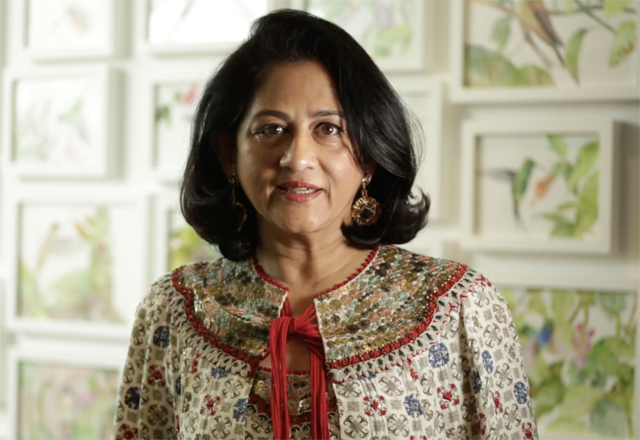
[dropcap]I[/dropcap]magine 108 hummingbirds gloriously populating the staircase of the arts center, turning it into an aviary of movement and magic. Each unique in its personality and colors, the birds, painted in watercolor, look as if they will fly away any moment. For Reddy, these hummingbirds were first created in the early months of the pandemic when the community was hardest hit. “It was an incredibly challenging time for all of us, with most of us feeling sad and helpless,” she recalls. “And yet, the sense of loneliness and the isolation of the quarantine also provided me with a time and space to paint consistently and without distractions. I was able to connect deeply with myself in a way that I found undeniably healing.”
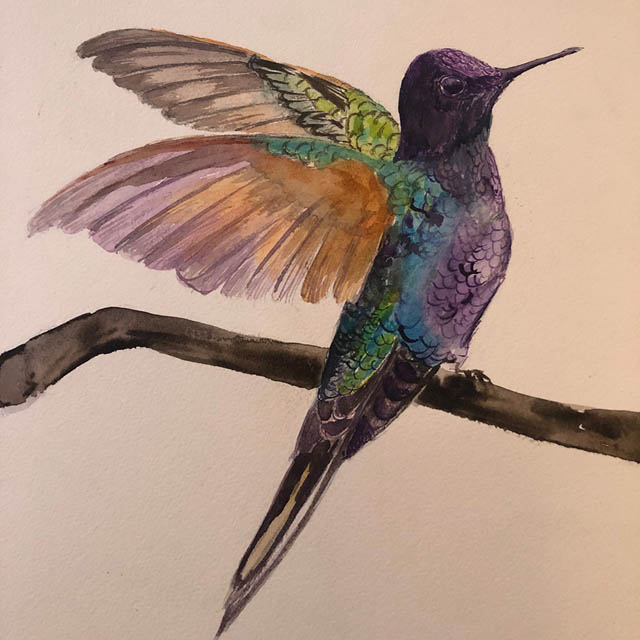
[dropcap]R[/dropcap]eddy started the practice of painting one hummingbird every single day and for her this took on a very meditative, almost prayer-like quality. She has painted hummingbirds for almost a year but decided to show 108 of them since it’s such an auspicious number. To share the joy she has felt while painting these exquisite birds, some no bigger than a thumb, she decided to put them on Instagram so they could populate spaces virtually.
As she recalls, “I was a little bit shocked when I first started painting them – there were so many of these hummingbirds! They are so tiny, and yet they’re so perfectly formed. I was completely captivated by their beauty, their energy. It was as if they carried their message of hope and joy on their tiny little wings.”
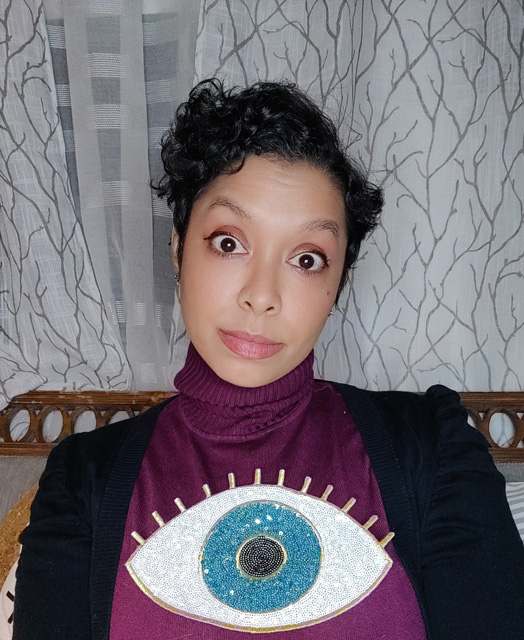
[dropcap]‘S[/dropcap]caffold: Equity of Treatment’ is the title of Elan Cadiz’s remarkable body of work which was created from March 2020 to March 2021, using photography and pen, pencil, acrylic and flash paint on Shizen pastel paper which is handmade in India from 100 percent recycled materials. She uses drawing, collage, photography and video editing to create her very personal portraits.
Cadiz who is a native New Yorker, photographed family, friends, artists and colleagues and then created a deeper story through scaffolding. She has created over 146 Scaffold projects, about 12 a month, and is still working on others.
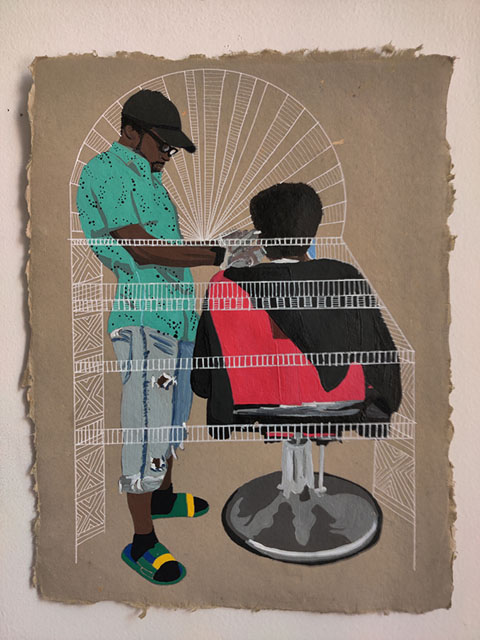
Just as stressed buildings needing repair are reinforced with scaffolding to give them support, she used pen and paint scaffolding in her portraits, created over the year of the pandemic to give her friends and neighbors protection and mental support. Looking at these photographs of men and women with the magical scaffolding around them, it feels like a mental hug, a compassionate gesture to empower those going through tough times.
“I see myself as a cultural interpreter and visual documentarian,” she says. “I immerse myself in new environments, documenting the familiar and the unfamiliar, all the while expressing these increased through artworks.”
Indeed, in ‘Scaffold: Equity of Treatment’ she emphasizes the fact that there needs to be equitable treatment in homes, communities and the world. “The use of the scaffolding is to symbolize the individual care and support that is needed. It’s there to encourage mental, spiritual and physical wellness, in order to bring understanding of the relationship between consciousness and matter. When we know ourselves, we can better ask for what we need.”
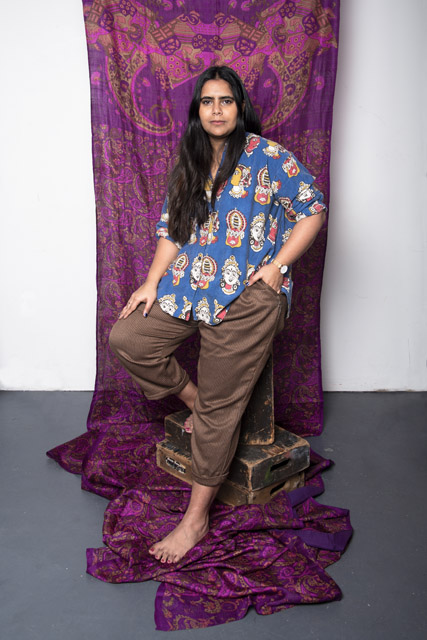
Spandita Malik, a photographer from Chandigarh who graduated with an MFA in photography from Parsons in 2017, brings her homeland to New Jersey. She had traveled to three different places known for distinct styles of embroidery: Lucknow in Uttar Pradesh (chikankari embroidery on mulmul or voile); Jaipur in Rajasthan (gota-patti or zardozi embroidery on khadi); and Chamkaur Sahib in Punjab (phulkari silk thread embroidery on khaddar or cotton fabric).
[dropcap]I[/dropcap]n ‘Threads of Identity’, she documents the lives of unknown women whom she encountered in rape survivor groups and domestic abuse centers where they were learning embroidery to find a viable living. She visited these women to learn about the difficulties they were facing. Patriarchy did not allow these women to leave their homes so she photographed them in their home setting, and then printed the portraits on fabric and asked each of the women to embellish the portrait through her own unique embroidery, thus giving them a voice in their own story. This ongoing project, Nā́rī, features embroidered photographic portraits made in collaboration with these women in India.
[dropcap]W[/dropcap]hile she had done some of the portraits in India before the pandemic, the past year has been one of isolation for everyone, and she followed through on the rest of the portraits via Whatsapp and Google, and using her parents as the go-betweens. Once travel becomes common, she plans to travel through other states and create similar embroidered documentaries.
Malik says, “I’ve realized that I’m not a photographer, I’m not an artist – I’m a storyteller.” The stories she tells are of silenced women and she makes them active participants, giving their side of the story through their own embroideries. She says: “I believe that I had the privilege of knowing those stories and listening to them, and hearing them, and now have the responsibility to retell and share those stories in the world.”
In a way all three artists show how art can heal, cut the isolation and help us all to be more resilient: Rasika Reddy through the joy of her auspicious hummingbirds, Elan Cardiz with her protective scaffolding which helps the marginalized reach new heights and Spandita Malik by giving a voice to the silenced and the isolated. Through their work, all three connect communities.
(This was first published in my weekly column ‘India in America’ in CNBCTV18.com )

